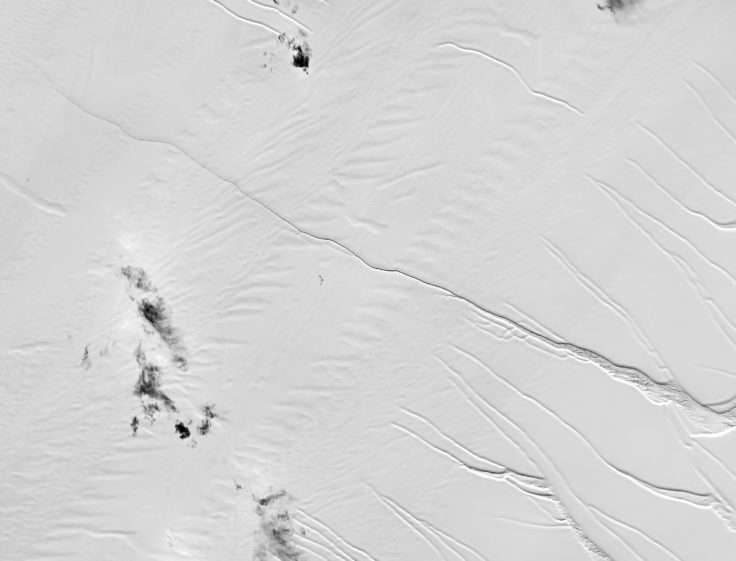Giant iceberg set to calve from Larsen C ice shelf

A huge iceberg, roughly the size of Norfolk, looks set to break away from the Larsen C ice shelf on the Antarctic Peninsula. Larsen C is more than twice the size of Wales. Satellite observations from December 2016 show a growing crack in the ice shelf which suggests that an iceberg with an area of up to 5,000 km2 is likely to calve soon.
British Antarctic Survey researchers have a long running research programme to monitor ice shelves from both above and below to understand the causes and implications of the rapid changes observed in the region.
During the current Antarctic field season, a glaciology research team has been on Larsen C using seismic techniques to survey the seafloor beneath the ice shelf. Because a break up looks likely the team has not set up camp on the ice as usual. Instead they have made field trips by twin otter aircraft supported from Rothera Research Station.
Glaciologist Professor David Vaughan OBE, Director of Science at British Antarctic Survey, said, "The calving of this large iceberg could be the first step of the collapse of Larsen C ice shelf, which would result in the disintegration of a huge area of ice into a number of icebergs and smaller fragments. Because of the uncertainty surrounding the stability of the Larsen C ice shelf, we chose not to camp on the ice this season. Researchers can now only do day trips from our Rothera research station with an aircraft nearby on standby."
Dr Andrew Fleming, Remote Sensing Manager at British Antarctic Survey, said, "We use regular satellite images provided by the European Sentinel satellites to monitor cracks in the ice shelf. These images are perfect for following these changes since they provide detailed information, day or night and regardless of cloud cover."
About ice shelves
An ice shelf is a floating extension of land-based glaciers which flow into the ocean. Because they already float in the ocean, their melting does not directly contribute to sea-level rise. However, ice shelves act as buttresses holding back glaciers flowing down to the coast. Larsen A and B ice shelves, which were situated further north on the Antarctic Peninsula, collapsed in 1995 and 2002, respectively. This resulted in the dramatic acceleration of glaciers behind them, with larger volumes of ice entering the ocean and contributing to sea-level rise.
Provided by British Antarctic Survey


















